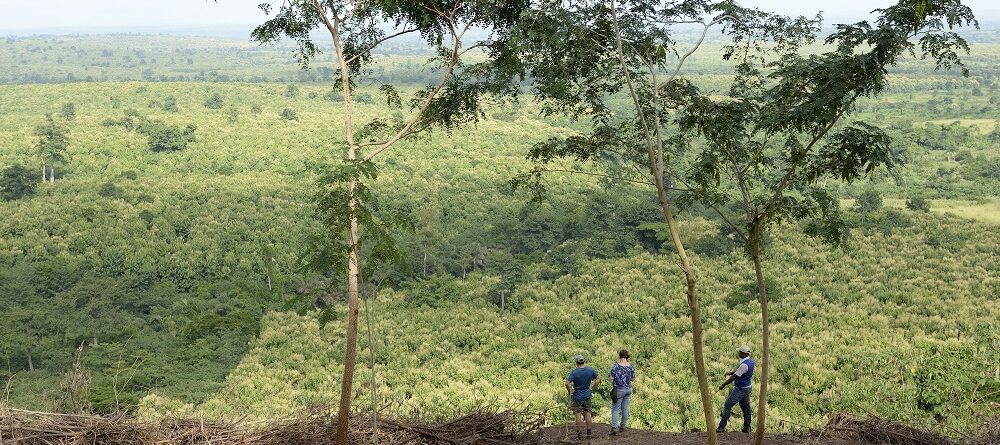As Form International grows, we are deeply committed to developing sustainable and impactful landscape restoration projects. Each landscape we work in has its own unique set of challenges and opportunities. Over the years, we’ve learned that success lies in understanding the local context—both in terms of the physical environment and the complex web of land ownership, land use, and stakeholder interests.
Understanding the landscape
No two landscapes are the same. Some may be pristine forests with high conservation value, while others are degraded, with encroachment from agriculture and settlements. In every project, we encounter a different mix of land tenure systems. For example, in Ghana, we worked with traditional landowners who maintain traditional ownership rights, even when the central government manages the land. These diverse scenarios require us to deeply understand the physical and legal landscapes before we even begin restoration.
Mapping is an important first step in identifying the current land use, land titles, and licenses to operate—whether the usage is legal or illegal. This mapping process is critical, as it gives us a complete picture of the area. This will enable us to develop a comprehensive management plan that balances the needs of stakeholders while also addressing long-term conservation and restoration goals.
A collaborative management plan is a joint effort
We work closely with the various stakeholders to develop a landscape management plan. It is a joint process on an equal basis. This is the only way to achieve a well-balanced plan where all key interests and views have been taken into account. This involves zoning different areas based on their intended use—whether for natural forest conservation, forest plantations, enrichment planting, or sustainable agroforestry areas. Importantly, these plans are not static. We outline clear, long-term goals and break them down into manageable phases, such as 5-year, 10-year, and even 30-year plans. These plans will be evaluated from time to time and revised based on new insights.
One of the key lessons we’ve learned is the importance of collaboration. Steering committees are needed that include representatives from national and local governments, community leaders, and traditional landowners. Together, we develop a revenue-sharing model, which ensures that all stakeholders benefit from the restoration efforts. This is more than just an incentive—it’s a commitment from all parties to long-term sustainable and equitable land use.
In Ghana, we assisted in 2005 to shape the national land lease and revenue-sharing model that is now used across the country. Similar models are developed in Uganda, where we’re restoring 28,000 hectares of degraded land into natural forest, alongside 14,000 hectares of forest plantations.
Genuine commitment to stakeholders
Form International learned in the last 30 years that an open, long-term commitment to stakeholder engagement is crucial for success. It’s not about checking boxes for sustainable forest management certification, ESG, or fulfilling donor requirements only. It’s about building meaningful partnerships that stand the test of time and are embedded in the managing organisation. Too often, we see stakeholder consultations treated as a one-off event. But for us, it’s an ongoing process—listening to communities, understanding their needs, and ensuring we deliver on our promises. It should be in the heart of the people managing these projects!
Take our intercropping model, for instance. In some of the areas we work, we find farmers who have been cultivating the land for years. Although they are in some cases illegally working we offer them a solution that benefits everyone. Farmers are given annual contracts to grow crops between newly planted trees. They get to harvest their crops, while the plantation project benefits from free weeding. This arrangement is a win-win and has been highly successful in creating trust and cooperation.
Building a sustainable future
At the heart of everything we do is a focus on long-term impact. Our approach to landscape restoration is not just about planting trees—it’s about creating lasting solutions that benefit both the environment and the people who depend on it. We believe in pragmatic, real-world solutions that are developed through years of experience, dialogue, and collaboration with local communities, governments, and other stakeholders.
Our work may be complex, but it’s this complexity that makes it so rewarding. We are driven by a vision of a future where degraded landscapes are restored, ecosystems are protected, and communities thrive. We’re proud of the work we’ve done so far, and we’re excited to continue inspiring change alongside our partners.
—
This blog is written by Paul Hol, CEO of Form International.
Stay connected with Form International for updates on our ongoing projects and initiatives. Follow us on LinkedIn and visit our website for more stories on how we’re making a difference.

